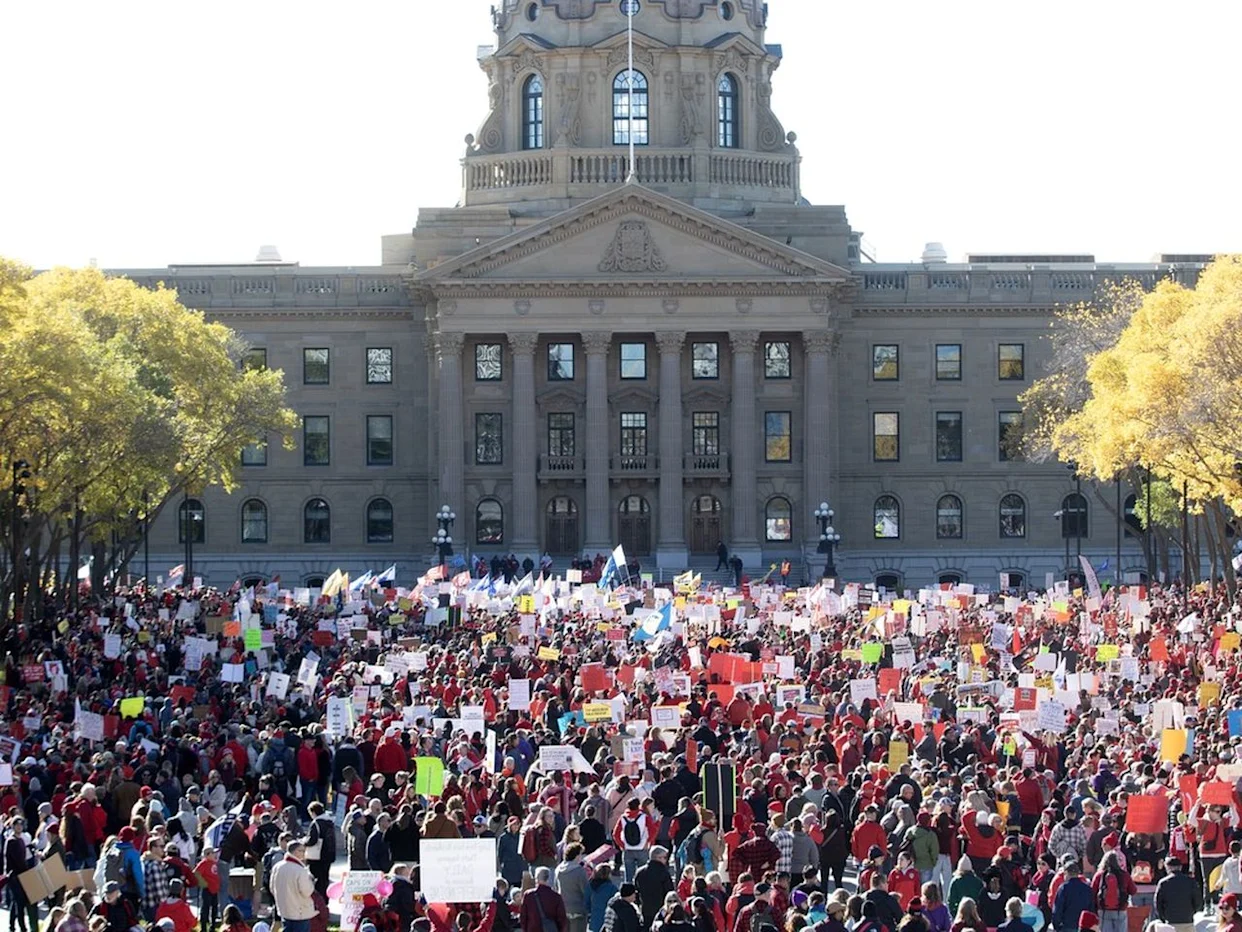Alberta Teachers' Strike: Back-to-Work Legislation Looms Over Stalemate
Edmonton Scoop
Archives
Alberta Teachers' Strike: Back-to-Work Legislation Looms Over Stalemate
SIGN UP FOR OUR NEWSLETTER
Government Threatens Back-to-Work Legislation as Historic Alberta Teachers' Strike Enters Tense Standoff |
With over 700,000 students out of school, the province warns it will force an end to the strike if a deal isn't reached soon, while teachers say the future of public education is on the line. |
Image credit: Yahoo news |
The Alberta government is threatening to legislate teachers back into the classroom, a move that could escalate the bitter dispute that has shuttered schools across the province for over a week.
Finance Minister Nate Horner stated the province will consider back-to-work legislation if the strike is not resolved by the time the legislature returns on October 27.
This represents a hardline stance from the government, signaling that its patience with the ongoing job action is wearing thin.
More than 51,000 teachers, represented by the Alberta Teachers’ Association (ATA), walked off the job on October 6, initiating the first province-wide teachers' strike in Alberta's history.
The historic strike has left approximately 740,000 students from kindergarten to Grade 12 out of class, forcing parents in communities from Edmonton to Calgary to scramble for childcare and alternative learning arrangements.
Talks between the ATA and the provincial government's bargaining unit, the Teachers' Employer Bargaining Association (TEBA), hit a wall this week with no new meetings scheduled.
The divide between the two sides appears to be massive.
Mr. Horner described the latest proposal from the teachers' union as a “shoot for the moon” ask, claiming it would require nearly $2 billion more than the government has budgeted.
The province's last offer, which was overwhelmingly rejected by teachers, included a 12 percent pay raise over four years and funding to hire 3,000 more educators.
But for teachers on the picket lines, the fight is about far more than salaries.
ATA president Jason Schilling insists the union's proposal is rooted in the reality of today's classrooms.
“You want reality? Go look at our classrooms across this province,” Schilling said at a recent news conference, pointing to ballooning class sizes and a lack of support for students with complex needs.
Educators argue the system is at a breaking point, with teachers facing unsustainable workloads and students losing out on essential one-on-one attention.
Recent studies have highlighted the immense pressure on Alberta's educators, who report some of the highest levels of work-related stress in the world.
Public sentiment appears to be leaning in favor of the teachers.
A recent Angus Reid Institute poll found that 58% of Albertans sympathize more with the teachers, compared to just 21% who side with the government led by Premier Danielle Smith.
The same poll revealed that 84% of respondents believe class sizes are too big, a core issue for the ATA.
Meanwhile, the daily lives of Alberta families are profoundly disrupted.
The provincial government has started offering financial aid to parents with children aged 12 and under, providing $30 per day to help cover unexpected costs.
This financial relief, however, does little to solve the long-term anxiety for parents worried about their children falling behind academically and socially.
The uncertainty is also impacting university students, with education practicums being cancelled, potentially delaying the careers of the next generation of teachers.
The government's threat of back-to-work legislation introduces a new, high-stakes dynamic to the conflict.
It’s a controversial tactic that forces an end to a strike but often leaves underlying issues unresolved, potentially poisoning labour relations for years to come.
As the standoff continues, the pressure mounts on both Premier Danielle Smith’s government and the ATA leadership.
With the legislature's return date looming, Albertans are watching closely to see if a deal can be struck or if the government will make the drastic move of forcing teachers back to work, a decision that would have lasting repercussions for public education in the province.
Our reader's top questions answered
What are the main issues in the Alberta teachers' strike? The primary issues are compensation, classroom size, and classroom complexity. The Alberta Teachers' Association argues that provincial underfunding has led to unmanageable class sizes and insufficient support for students with diverse needs, while the government maintains its financial offer is fair.
What is back-to-work legislation? Back-to-work legislation is a law passed by a government that orders an end to a strike or lockout and forces employees to return to their jobs. It often imposes a new contract or sends the dispute to binding arbitration to resolve the remaining issues.
How are parents being supported during the strike? The Alberta government is offering financial support through the Parent Payment Program. Eligible parents with children aged 12 and under can apply for $30 per day for each day of the strike to help with costs like childcare. The government has also provided some online learning resources for students. |

